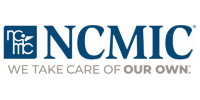Arlington, Va.—Following the resignation of U.S. Department of Health and Human Services (HHS) Secretary Kathleen Sebelius, the American Chiropractic Association (ACA) today announced it will continue its efforts, without hesitation, to ensure doctors of chiropractic (DCs) and their patients are treated fairly and equitably with regard to the implementation of the Patient Protection and Affordable Care Act (PPACA) and other key issues such as fully integrating DCs in new and emerging health care models.
“I applaud Secretary Sebelius for tackling a very difficult task and for the access her office has provided ACA,” said ACA President Anthony Hamm, DC. “We cannot waiver in our work; however, and we look forward to working with the new HHS chief as soon as that person is confirmed.”
President Obama is expected to nominate Sylvia Mathews Burwell, who currently serves as director of the Office of Management and Budget (OMB), for the top HHS post. While unanimously confirmed by the U.S. Senate for the OMB position, Burwell will undoubtedly face a tougher confirmation process on Capitol Hill this time, as political fallout from PPACA implementation continues.
“Making sure the all-important provider non-discrimination provision, Section 2706, of the Affordable Care Act is adhered to by insurers, and that chiropractic physicians are allowed to provide all covered services in Medicare that they are allowed to do under their state scope, are vital to the profession and our patients,” Dr. Hamm continued. “This work will be ongoing with current HHS staff and we expect no let-up during the change of leadership.”
The American Chiropractic Association (ACA), based in Arlington, VA, is the largest professional association in the United States advocating for more than 130,000 doctors of chiropractic (DCs), chiropractic assistants (CAs) and chiropractic students. ACA promotes the highest standards of ethics and patient care, contributing to the health and well-being of millions of chiropractic patients. Visit us at www.acatoday.org.




